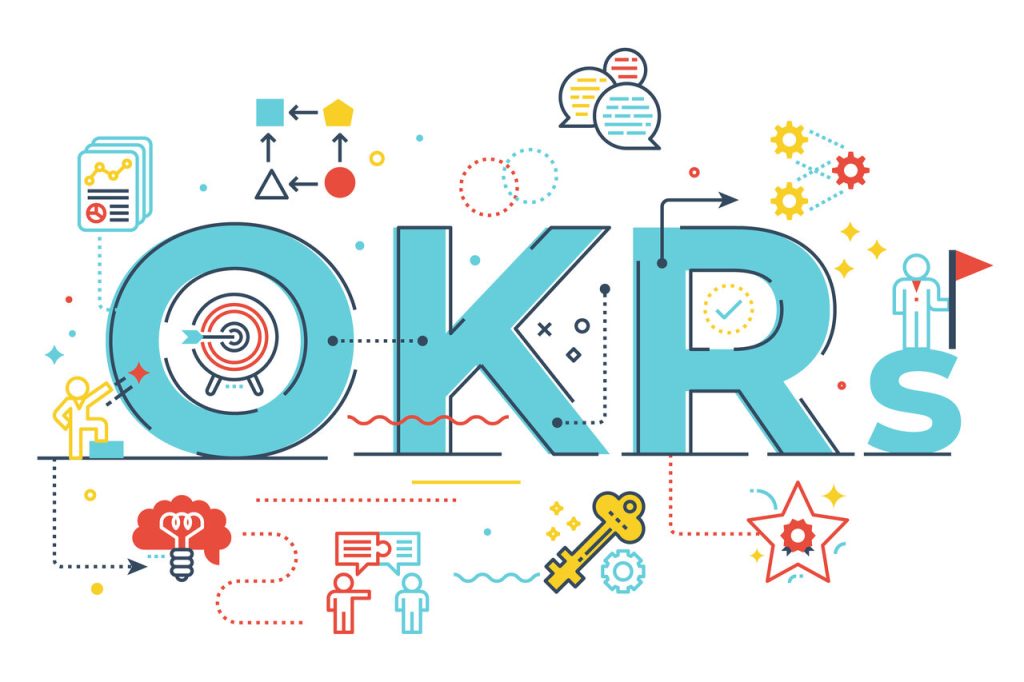
Many advantages accrue to an organization when it adopts an OKR-based, modern performance management system
Learn how PossibleWorks can help you
OKRs are highly effective as a performance management tool in today’s business context. Let’s take a closer look at why successful companies today swear by them. OKRs stands for ‘Objectives and Key Results’ which layout your objectives/strategy for achievement and the results which indicate the effectiveness of your execution and impact the outcome of your performance management exercise.
This simple approach is gaining an advantage over other performance management approaches, with companies like Google endorsing it more than 20 years ago and growing exponentially. The popularity of OKRs has spread far and wide since then. OKRs can be executed quarterly or even monthly to improve a business’s responsiveness to the impact of external factors, like the lockdowns in the current global pandemic. OKRs are cherished by many organizations as it makes it possible for people to set ambitious goals and push their boundaries to achieve more.
By implementing OKRs, an organization gets to follow a simple, practical, and straightforward framework to define, track, and measure goals. OKRs ensure alignment of employee goals to business objectives, thereby proving a singular direction of focus for all employees. OKRs help to improve focus on what really matters leading to improved performance.
Let’s look at the advantages of OKR in performance management.

Once top-line organizational objectives are set, the real work begins. As organizations shift from planning OKRs to execution, managers, and contributors alike tie their day-to-day activities to the organization’s company-wide vision. The term for this linkage is alignment, and its value cannot be overstated. According to the Harvard Business Review, companies with highly-aligned employees are more than twice as likely to be top performers.
Forget the traditional way of setting annual goals and conducting performance reviews only at the end of the year. OKRs are generally reviewed every quarter or every month depending on the agility demanded by the business. This system is much better suited to today’s fast-paced world, where constant transformation is the norm. This frequent review of performance ensures on-going conversations between the manager and the employee sharing meaningful feedback and timely course corrections. This leads to better communication between employees, their co-workers, and managers
It’s an age-old saying that what cannot be measured cannot be improved. Many objective-setting frameworks focus only on the goal but ignore the path which is taken to get there. But the ‘KR’ part of OKRs means that we really delve into the nitty-gritty, setting quantitative outcomes that are measurable to define success. This provides everyone absolute clarity on how their performance affects the company, what objectives they need to focus upon, what success looks like, and what steps/initiatives/actions must be taken to deliver on strategic priorities.
OKRs do not always cascade from the top downwards, where the leadership sets them first and then is followed by managers and then, their teams. They can also be set from the bottom-up or even sideways. Objectives using OKRs can be chosen by individuals and merged with the organization’s objectives as a whole. By doing this, we ensure the involvement of every employee and their ownership of and engagement with the OKRs. It would also make the employees feel less burdened when they get to choose their own objectives. Even as teams and employees achieve ambitious goals and connect better with peers and managers, reviews can become need-based and goals and objectives tweaked as required, taking the various factors which impact them, in an ongoing manner.
They steer clear of such decisions about bonuses and compensation without losing focus on goal attainment. Such linking makes many people play safe and just do what is needed to get the bonus. Some resort to ingenious malpractices to meet their performance metrics. With OKRS, the ambitious goals set need not be achieved in full because of the inbuilt stretch. This is one reason why the OKR based performance management does not get linked to pay and bonuses.
Everyone’s OKRs in an organization are visible to the others so that the dependent relationship between employees becomes obvious to all the players, making their performance management also that much more transparent when a failed objective has its roots in the non-performance of a related activity which is assigned to someone else in the organization. On a positive note, everyone can move together towards success, with complete understanding and clarity, when people become aware of the consequences of their non-performance, even before they get such feedback during a performance appraisal process.
It pays to not set too many OKRs as it helps to set focus on a set of few prioritized, ambitious objectives and achieve them with consistency, instead of dissipating everyone’s energy trying to achieve a lengthy laundry list of objectives. It will prove hard to be coordinated and work together on a large number of OKRs. Let everyone be inspired, challenged, and motivated by OKRs to achieve the goals set and make your performance management efficient and effective.
All you need is an innovative performance management software to use OKRs as a goal-setting strategy linking everyone’s goals to the company’s objectives. OKRs help employees understand what is expected of them at work and enable them to contribute to the goals set for them.
References: